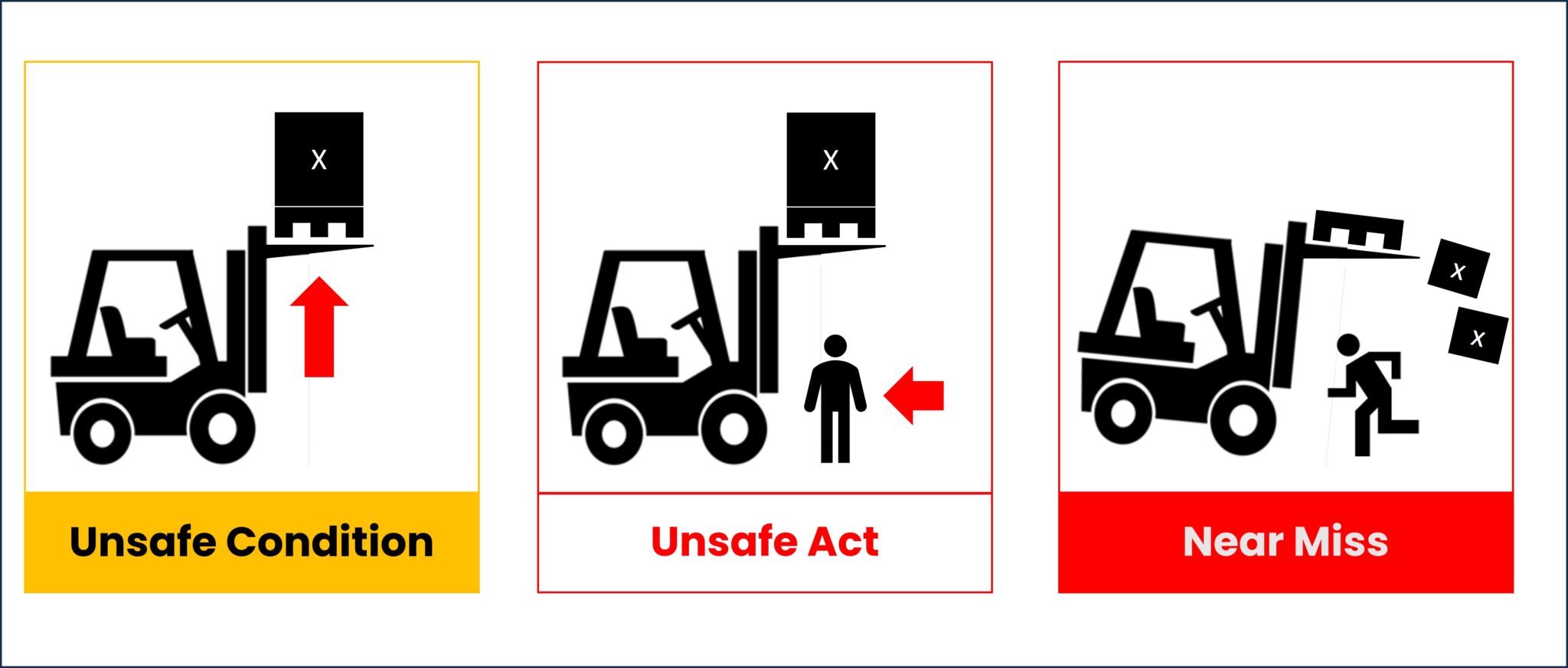Why Good Catch & Near Miss Reporting is Essential for Safety in the Workplace

At Fit2Trade, we understand that workplace safety goes beyond addressing incidents after they happen. Near miss reporting plays a vital role in identifying risks before they become serious. By understanding near misses and implementing a system to report them, companies can safeguard their employees and prevent potential hazards from escalating.
What is a Near Miss?
A near miss is any unplanned event that could have led to injury, illness, or property damage but didn’t. Often, it’s a matter of luck or timing that prevents the incident from becoming a serious one. These close calls, also known as near misses, close calls, or narrow escapes, provide valuable insights into workplace safety.
Examples of near misses include:
- Slips and trips
- Working at heights
- Using hazardous materials or equipment
Rather than being dismissed, near misses offer businesses the chance to identify and rectify risks before an actual incident occurs. By logging and analyzing near misses, companies can address the root causes of safety issues and reduce the likelihood of future incidents. This proactive approach can save time, resources, and money by preventing accidents.
Example of a Near Miss
Imagine an office worker walking down a hallway when they notice a small puddle of water near the bathroom entrance. As they step over it, they almost lose their balance but manage to steady themselves in time. The water, which is the result of a leaking pipe, could have caused a slip, leading to potential injury.
No one was hurt, but this simple near miss highlights a maintenance issue that needs to be addressed. By reporting the near miss, the company can fix the leaking pipe and ensure that future accidents are avoided.
Analyzing near misses like this can help identify potential hazards, and the lessons learned can be used to prevent future accidents. Whether it’s additional staff training, process changes, or equipment maintenance, near miss reporting allows companies to take proactive steps towards safety.
The Challenges of Near Miss Reporting
In practice, defining and reporting near misses can be tricky. Common questions arise, such as:
- How do we determine whether an incident qualifies as a near miss or just unsafe behavior?
- If no injury or damage occurred, does it still require investigation?
- Do we need to report and investigate near misses that were caught and corrected in time?
These discussions often highlight the need for clear guidelines around reporting. Some organizations introduce incentives or quotas for near-miss reporting, but these can sometimes lead to inaccurate or inflated reports. Employees may misunderstand the categories or submit repeat or even fake reports, making it harder to identify genuine risks.
To avoid these issues, it’s important to foster a strong safety culture that encourages accurate reporting without relying solely on incentives.
Best Practices for Near Miss Reporting
Here are a few practical steps to improve near miss reporting within your organization:
-
Reframe the Process: Consider calling near miss reports “H&S Observations” to encourage a proactive approach to identifying unsafe conditions or actions. This broader focus allows employees to report not only near misses but also unsafe acts and conditions before they escalate.
-
Incentivize Observation, Not Just Reporting: Instead of incentivizing near-miss reports, reward employees for completing proactive safety observations. This approach fosters a more forward-thinking safety culture and reduces the pressure to report only incidents.
-
Comprehensive Training: Ensure all employees, from junior staff to the CEO, understand the difference between near misses, unsafe acts, and unsafe conditions. Incorporate this into induction and ongoing safety training.
-
Use Data Effectively: Train your H&S department to analyze near-miss data and prioritize high-potential incidents—those that could have caused significant injury or damage. This allows your team to focus on the most critical issues.
-
Leverage Technology: Use centralized systems to track and analyze near-miss reports. Digital tools can help streamline reporting and provide valuable insights into trends and potential hazards.
-
Link Observations to Performance: Encourage a reporting culture by linking safety observations to employee performance reviews. This not only promotes accountability but also highlights management’s commitment to safety.
Conclusion
Near miss reporting is a critical part of any effective safety program. By taking a proactive approach, businesses can prevent incidents before they happen, leading to fewer injuries, better safety standards, and cost savings.
If you’re looking to enhance your workplace safety and compliance, Fit2Trade can help. Join our upcoming webinars for expert insights and actionable steps to improve your near miss reporting process.
Written by Rory Byrne from Fit2Trade
